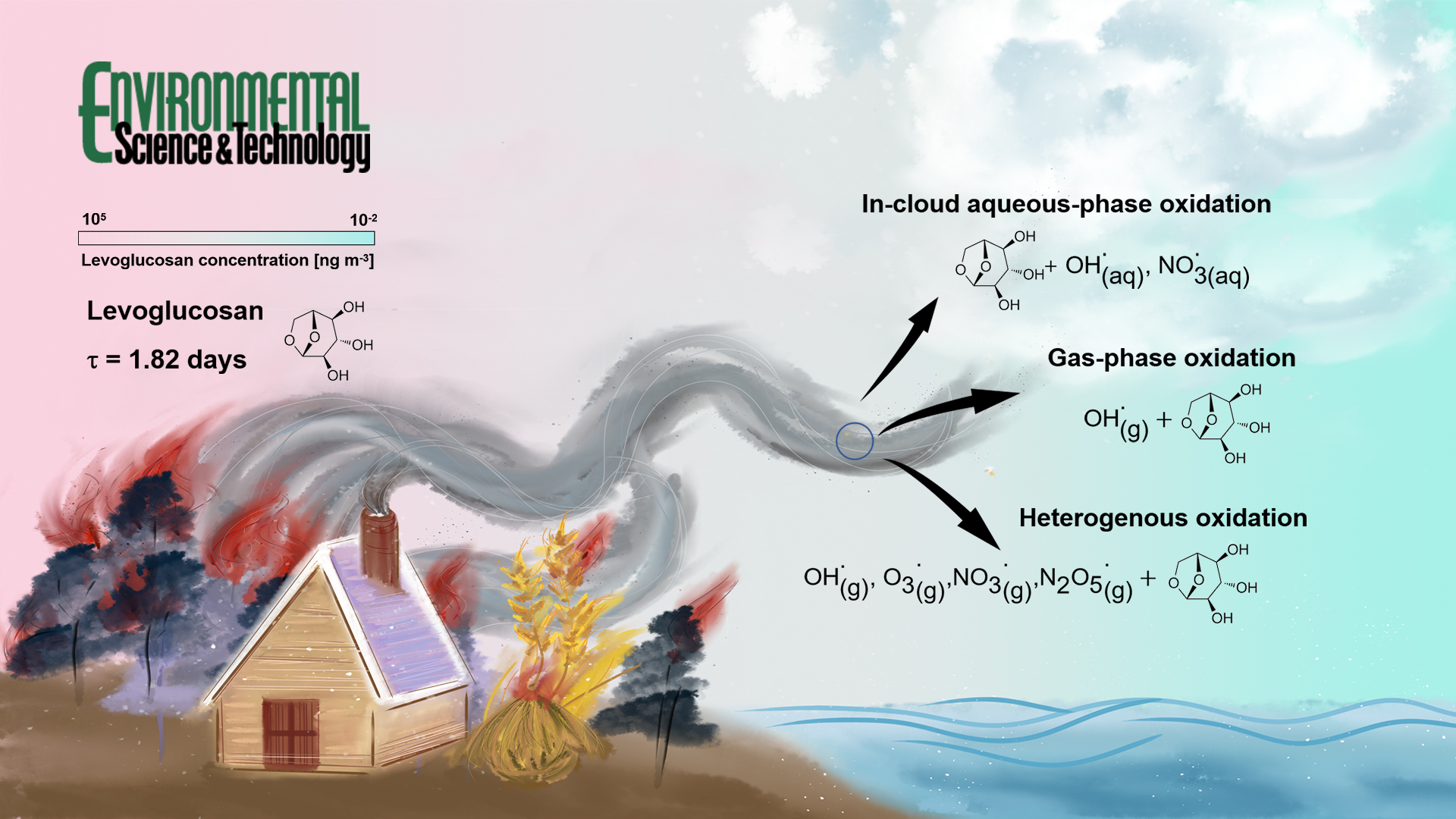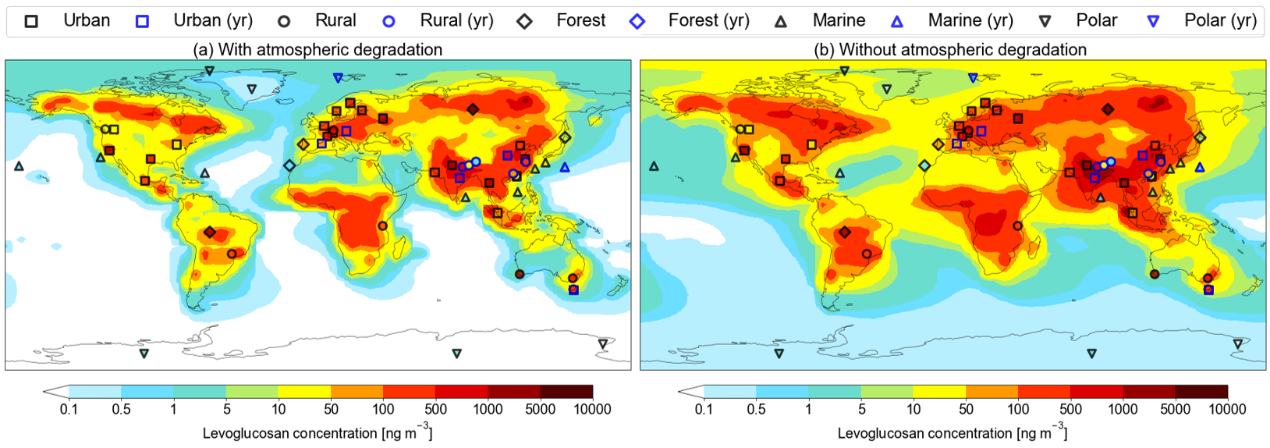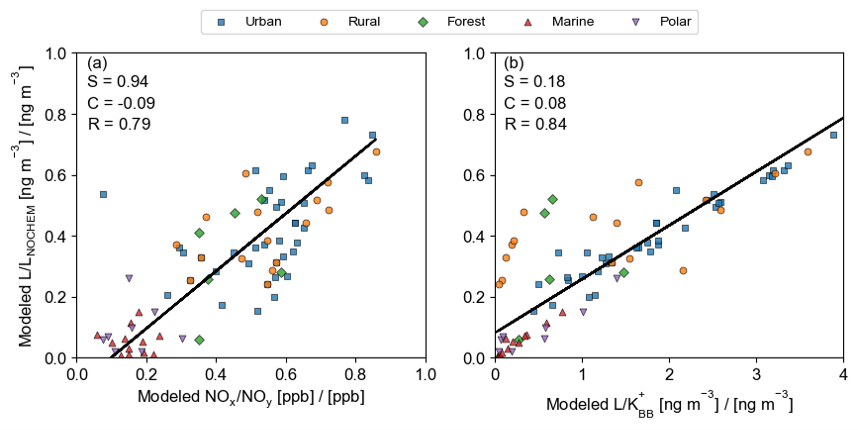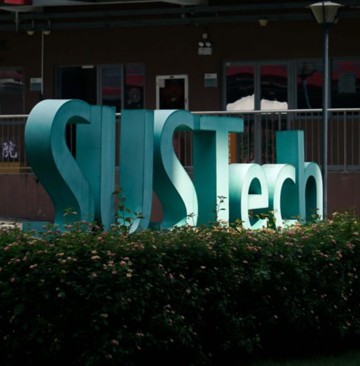Researchers simulate impacts of chemical degradation on atmospheric levoglucosan and its use as a biomass burning tracer
A group of researchers from the Southern University of Science and Technology (SUSTech) and the Hong Kong University of Science and Technology (HKUST) collaborated to develop the first global simulation of atmospheric levoglucosan, explicitly accounting for its chemical degradation, and evaluated the impact on levoglucosan’s use in quantitative aerosol source apportionment. Their research, entitled “Impacts of Chemical Degradation on the Global Budget of Atmospheric Levoglucosan and Its Use As a Biomass Burning Tracer,” was published in Environmental Science & Technology, a top journal in the field of environmental science.

Levoglucosan (1,6-anhydro-β-d-glucopyranose), a water-soluble anhydrosugar produced by the thermal breakdown of cellulose, has been widely used as a molecular tracer for biomass burning. Many studies have used the measured abundance of levoglucosan relative to organic carbon aerosols (OC) to estimate the contribution of biomass burning to the ambient OC at a receptor site. Laboratory experiments show that levoglucosan can be oxidized in the gas and aqueous phases or on aerosol surfaces. However, previous assessments have not accounted for levoglucosan’s degradation in the atmosphere, and thus may have underestimated the contribution of biomass burning to ambient aerosols.
By constructing the first global model of atmospheric levoglucosan, researchers from SUSTech and HKUST showed that the global burden of atmospheric levoglucosan is 19 Gg. The atmospheric lifetime of levoglucosan (burden divided by total removal rate) is 1.8 days, which is much shorter than what it would have been without chemical degradation (7.3 days). The simulated concentrations reproduced the observed sharp decline in particulate levoglucosan concentrations from near-source to remote sites only when atmospheric degradation processes are included (Figure 1 and 2). The researchers further examined the impacts of levoglucosan’s degradation on the particulate levoglucosan to OC concentration ratio ([L]/[OC]) (Figure 2b), and the particulate levoglucosan to K+ concentration ratio ([L]/[K+]) (Figure 2c). Again, the decreasing ratios from near-source to remote sites can only be simulated when considering the levoglucosan’s chemical degradation (Figure 3).

Figure 1. Simulated (filled contours) annual mean particulate levoglucosan concentrations (a) with and (b) without atmospheric degradation, compared to the observations (symbols coded by site types). Symbols with blue outlines show annual mean observations and symbols with black outlines show seasonal observations, which may be biased toward intense biomass burning influence.

Figure 2. Comparisons of observed (black) and simulated values of (a) particulate levoglucosan concentrations, (b) particulate levoglucosan to OC concentration ratios, and (c) particulate levoglucosan to K+ concentration ratios at global surface sites. Red and blue lines indicate simulations with and without atmospheric degradation of levoglucosan, respectively.
Researchers further defined a correction factor, x (x =[L]/[LNOCHEM]), representing the freshness of particulate levoglucosan at a receptor site. They then parametrized x as a function of the simulated molar ratio of NOx to NOy and L to biomass burning K+ to correct for the effects of aging in observed levoglucosan concentrations.

Figure 3. Scatterplots of the simulated [L]/[LNOCHEM] ratio (≡ x) (a) versus the simulated [NOx]/[NOy] ratio and (b) versus the simulated [L]/[K+BB] ratio, where [K+BB] is the concentration of K+ emitted from biomass burning. The black lines show the reduced major axis linear regression lines; the slopes (S), intercepts (C), and correlation coefficients (R) are shown inset.
By applying the parametrizations to the particulate levoglucosan measurements in Lin’an District in Hangzhou, China, and Chichijima, Japan, the researchers demonstrated the improved use of levoglucosan measurements for aerosol source apportionment. The assessment of the contribution of biomass combustion to local organic aerosols increased from 2.3%-5.6% to 14%-33% (Lin’an) and 0.3%-0.8% to 3.4%-8.3% (Chichijima), respectively, which were more consistent with other observed evidence of biomass combustion in the two receptor areas. This study improved the quantitative traceability method for the contribution of biomass combustion to organic aerosols.
Yumin Li, a Ph.D. student supported by the joint doctoral program between SUSTech and HKUST, is the first author. Professor Tzung-May Fu of SUSTech and Professor Jian Zhen Yu of HKUST are the corresponding authors. This work was supported by the National Natural Science Foundation of China (NSFC) and the Shenzhen Science and Technology Innovation Committee. Computational resources were provided by the Center for Computational Science and Engineering at SUSTech.
Paper link: https://pubs.acs.org/doi/10.1021/acs.est.0c07313
